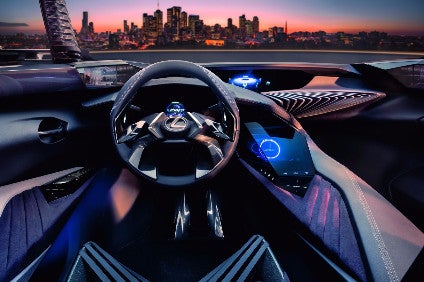
The Lexus UX Concept, making its world debut at the Paris show, presents a vision for imaginative, forward-thinking technologies that will provide vehicle occupants with a fully immersive experience.
The interior reveals floating hologram-style displays for the driver’s instrument binnacle and centre console, alongside the latest advances in vehicle electrical technologies.

Discover B2B Marketing That Performs
Combine business intelligence and editorial excellence to reach engaged professionals across 36 leading media platforms.
A vision for a compact SUV of the future, the concept represents a new step in the company’s design journey and a redefinition of the driving experience.
All on-board human-machine interface technology has been designed to offer an innovative, three-dimensional driver experience to progressive customers who live and work in an ever-connected environment.
The driver’s instrument binnacle houses a transparent globe, floating in the manner of a hologram, in which a combination of analogue and digital information expresses a functional yet unexpected user interface.
The centre console features a prominent, faceted crystal structure within which a hologram-style display of the air-conditioning and infotainment systems is clearly visible to both driver and front passenger.

US Tariffs are shifting - will you react or anticipate?
Don’t let policy changes catch you off guard. Stay proactive with real-time data and expert analysis.
By GlobalDataThe latest advanced in-vehicle electrical technologies are also on display in the concept. It features electro-chromatic windows while door mirrors are replaced by e-mirror camera housings that are far slimmer than conventional mirror assemblies. All switchgear is electrostatic and displayed under transparent covers.
Finally, the fin motif used on the A-pillar lining is repeated on the dashboard to provide an advanced audio experience – a demountable sound bar built into the passenger side of the dashboard.
“Our brief was to create a new genre of compact crossover; a vehicle that could create something unique from a customer’s point of view – an innovative, three-dimensional, fully immersive user experience,” said Stephan Rasmussen, designer at Toyota’s European design centre, ED2.




